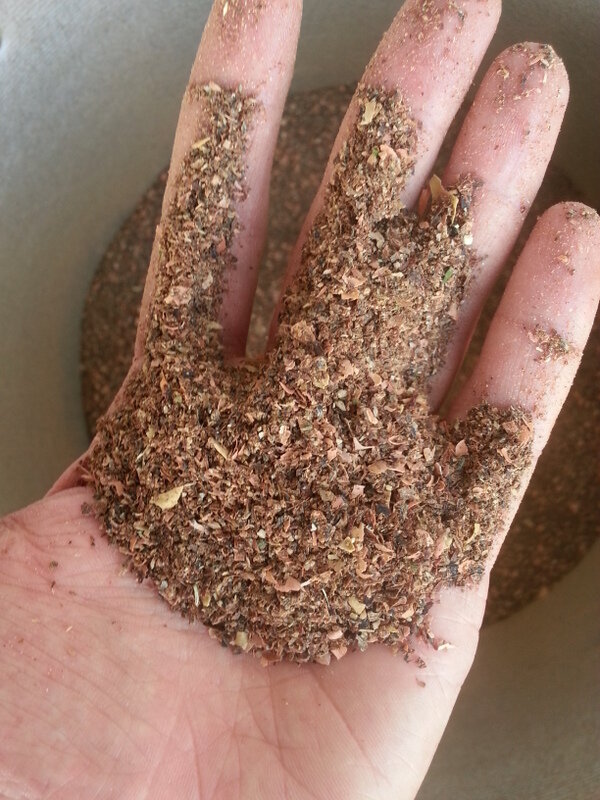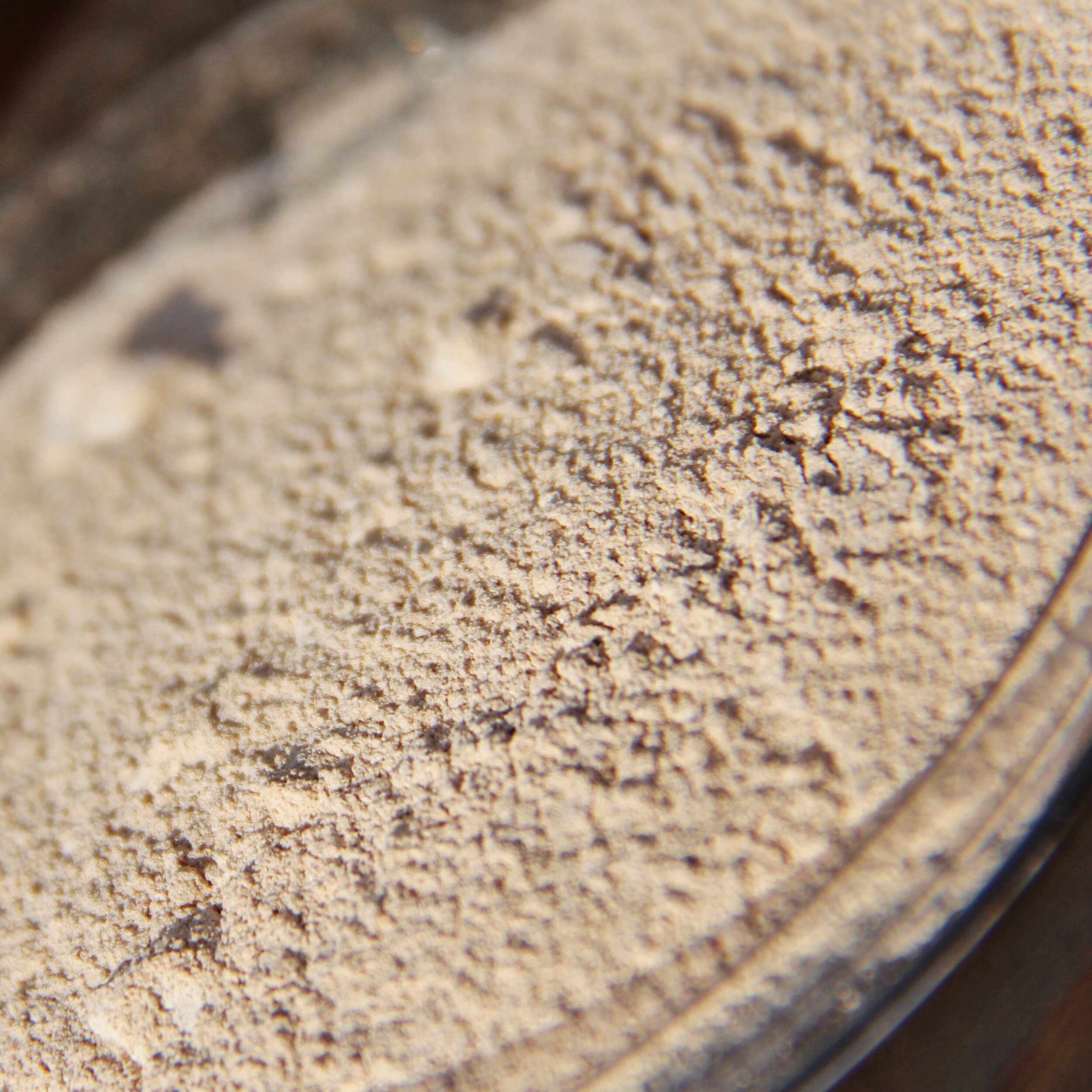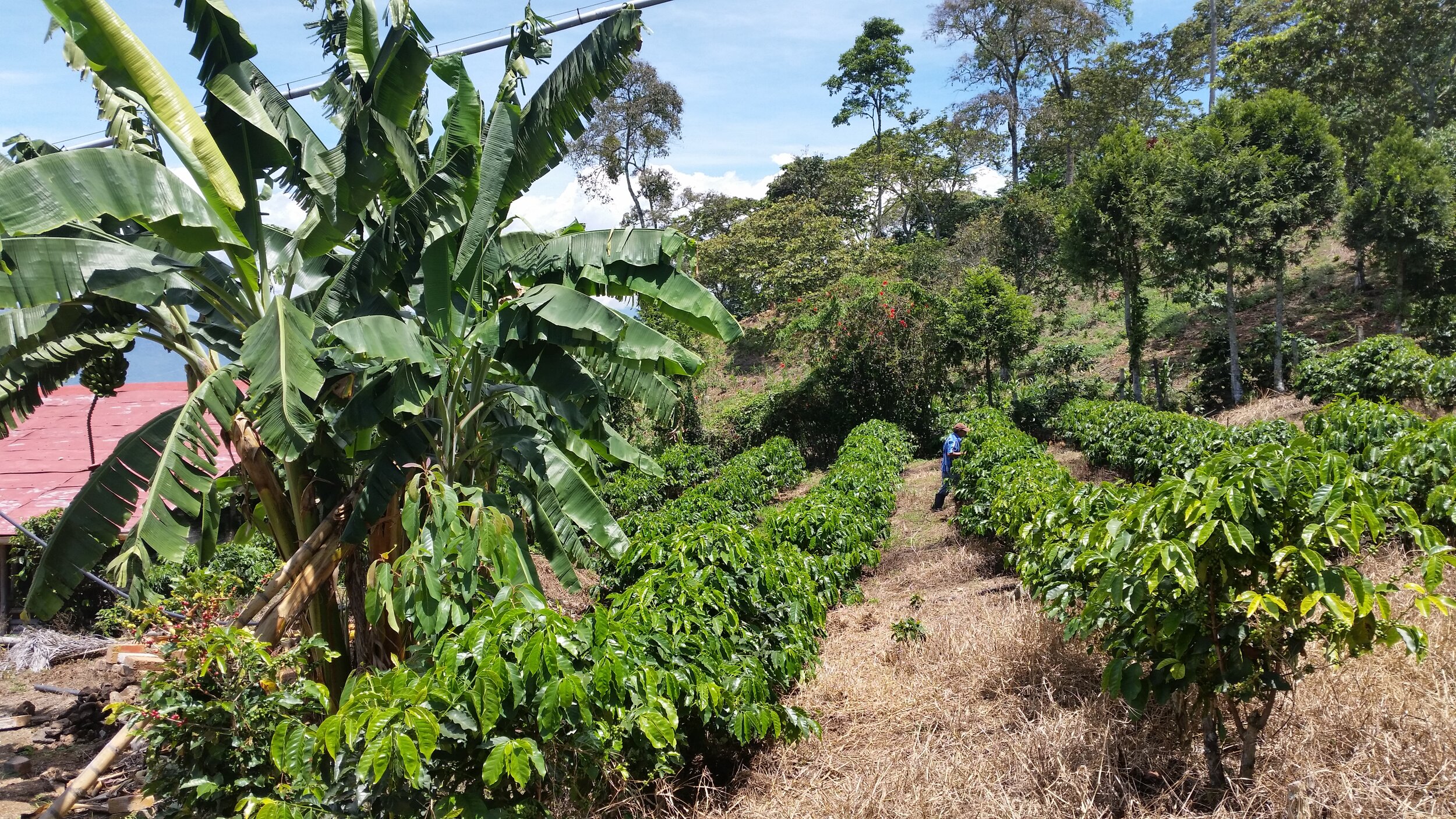PECTCOF

Transforming the coffee pulp—a side stream of the coffee chain—into valuable bio-compounds for the production of food ingredients.
Website: pectcof.com
Founded date: 2012
Industry: Food & Drinks ingredients
Business model: B2B
Applications: Dutch gum, antioxidants, colours, fibers, sugars
Country HQ: The Netherlands
Coffee cherries on the branch
YOUR JOURNEY TO FUNDING
I have a bachelor in electrical engineering and a master in management, innovation and Life Science at Wageningen University. I founded the company in 2012 together with two other students, an Italian and a Colombian, out of a university course called New venture creation from idea to business plan. There, our Colombian co-founder pitched the idea of extracting components from the coffee pulp - basically the flesh and the skin of the coffee cherry fruit.
I thought it was a great idea to use the waste stream of such a big industry to produce something of value. And it really is a big waste stream - about 10 million tons of coffee pulp are being produced each year. At that moment in time, it was just an idea - we didn’t have anything in mind about specific products or compounds, even though we had preliminary insights into pectin. That’s why we called the company PectCof - Pectin from Coffee pulp.
“It really is a big waste stream - about 10 million tons of coffee pulp are being produced each year”
We started the development phase, and in 2015 we had our first Business Angel on board, who later became the co-director of the company. In 2016, we signed a rather large Seed Round with another business angel that came from the network of the first business angel. Over the years, he has proven very helpful to make the company grow. Currently, we are raising another round for the next two years in order to scale up production, develop a broad range of applications and tackle the regulatory status in Europe.
Are you still the same three co-founders working in the company?
No, things have been changing. In 2014, we bought out the shares of the Italian co-founder. And in 2015, the Colombian co-founder left the company, but he’s still a shareholder. At that moment in time we switched from innovating the process to a more standardized process, in which every day we basically have to do exactly the same, because your customer doesn't want a varying product every single day. And just running production was not interesting for him.
Right now, we have a core team of three people. We have our co-director Hans, who is very experienced - we funnily call him the ‘gray hair’ of the company. Then there is Femke, our employee on research & development, who studied at TU Delft - Life Science and Technology. And then, there is me, and I am part of both the management team and I'm also part of the research and development team. That’s our skeleton team. Then we have boots on the ground in Colombia, we have two operators in the production plant, and we work a lot together with Wageningen University. So we have a thick layer around the company of people that we partner with.
THE INNOVATION
So you save the coffee pulp from being wasted. What do you do with it? How does the value chain look like?
The process starts with the collection and preservation of coffee pulp in the country where it is produced. This biomass is later shipped to Europe, where we execute the separation and purification of the products. The final stage is the commercialization for different applications. We have two patents. One patent is about the conversion made from the wet biomass to a dry and stable biomass, which is done directly at the plantation sites. The biomass is then shipped to Europe where we do the conversion and make the end product. This second process is also patented, including the chemical composition of the end product. And that product is an ingredient for a broad range of applications.
Coffee cherries before processing
Dried and preserved pulp ready for shipment
Where are you sourcing the coffee pulp from?
Now it’s centralized in Costa Rica and Colombia, where we have operations. If we source from a certain country, we should have boots on the ground to implement the drying, the milling, the packaging and the whole logistics process around it. The biomass needs to be in top shape, in order for us to be able to extract the right components from it.
What volumes can you currently handle?
We have now a proven process for about one cubic meter. Over the next few years, we want to scale the process to 6, 10 and later 30 cubic meters. The process is scalable. Up to this point, we have proven that the technology works, together with all the necessary processes of filtration, extraction, purification and drying.
How does the efficiency of the conversion of the biomass look like?
The conversion that we have right now is about 10% of the biomass ending up in the product called Dutch Gum - and that’s already pretty high. We can boost that with some optimization in the process to about 15-18%. Next, we want to extract insoluble fibers, which are water binding fibres. I think we can use them in applications like meat replacement. We are currently in touch with an Irish company to see what we can do with these fibers.
What was the use of coffee pulp before your innovation?
There are some farmers that process it in the plantations and turn it into compost. But that’s not really economically feasible - it’s mostly done to adhere to legislation and due to labels such as the Rainforest Alliance. These labels say that they have to do something with it - but ‘something’ is a very broad term. In those cases, it’s done more for the labeling than for sustainability purposes.
“In those cases, it’s done more for the labeling than for sustainability purposes”
APPLICATIONS
As you mentioned, your final product is an ingredient that can be applied in several applications. What have you been focusing on so far?
We are currently scaling our product development. Up until now, we have seen that we can replace Arabic gum or acacia gum in a lot of applications, such as soft drinks, candies and bakery goods. We can replace the emulsifier and stabilizer. We have also seen that we can replace an alginate PGA, which has a chemical connotation on the label that people want to get rid of. For instance, we can replace it in a sauce application. We’re currently exploring new applications to broaden the scope. For instance, we are working on the coating for candies that you might recognize from products like the M&M's candies. We’re also working on plant based marshmallows and yoghurt drinks to stabilize the proteins. So, a broad range of applications.
Looks like the food industry is your main target. What do you see as the most promising avenues in there?
The soft drink is the most interesting market segment because that's the largest chunk of the market of Arabic gum replacement that we can do. For the alginate replacement, that's also very interesting for the sauce market. In a broader perspective, right now, we have focused on pectin plus protein - it’s this combination that makes up for our Dutch Gum. But if you would purify it and get rid of the protein fraction, that you have a pectin as a pure substance, and the pectin market is even bigger than the Arabic Gum market, so that would be an even broader market to apply the product to.
Dutch Gum in powder
Being an innovation in the food industry, I can imagine there are also quite some steps to be done on the regulatory side.
Exactly, regulatory approval is another of our priority areas. Given that we have a new biomass, a new technology and a new product, we are basically three times new. This takes a lot of time to develop, and we need the approval of the European Union to get this food ingredient on the market, because this type of biomass has not been eaten before - it’s basically a novel additive. So we’re preparing documentation for a Food Additive dossier to send to the European Union to let them investigate if enough work has been done to prove its safety and to basically have it regulated.
“Given that we have a new biomass, a new technology and a new product, we are basically three times new”
Have you done co-innovation projects with corporates to further test your applications?
Yes, we have cooperated with two multinational corporates for the candy and sauce applications. We first try it out in our own lab to do small scale tests and recipe developments. Then we go to the customer and we run a pilot on the ingredients to test texture, taste and all other relevant elements. We are always looking for more companies to do that with. For us, it’s also validation for our next investment rounds - the more customers you have tested your product with and the more recipes you have developed, the more validated is the whole model.
VALUE IN CIRCULAR ECONOMY TRANSITION
We have seen that coffee pulp is mostly dumped in producing countries - and the problem with the pulp is that it's pretty acid. So if you dump it, then there's a lot of water soaked up in the pulp, which is then released into the groundwater and acidifies the soil as well as water streams. For instance, we have seen that for agricultural purposes, you cannot grow crops on a dumping field for at least 4 - 5 years because of that acidification. And certainly you don’t want to pollute water streams that are used for irrigation. We believe it’s definitely better to use the pulp for a good cause instead of just leaving it unused on farmland.
So it’s—on one side—preventing pollution of land and water, while—on the other—creating something valuable out of it.
Exactly. And in the coming years, I think it will be a big boost for the farmers that grow the crop. They grow the coffee cherry as a whole, and right now they only get money for half of it, which is the coffee beans. The rest of it - the pulp - is basically a waste disposal problem for them. Also for large coffee cooperatives that are working to make their value chains more sustainable, they are working to cut down water use in the coffee bean process - but they are not even looking at what is not the coffee bean. They say ‘we buy the beans, and the pulp is a problem of the farmers’. This is also shifting nowadays, as you need to be more socially responsible and consumers are getting more knowledge on international waste streams.
A coffee cherry inside
As such, your innovation can also represent an additional revenue stream from the farmers, right?
Yes, and we have seen this first hand. In Ethiopia, for instance, we can double the income of a farmer, where we offer the same price as they get for their coffee beans. It has a huge impact both on sustainability - from not dumping this acid product - and on the income of the farmers.
“It has a huge impact both on sustainability—from not dumping this acid product—and on the income of the farmers”
Coffee plantation in Colombia (Pectcof sourcing site)
FUTURE PLANS
What I see down the line is another seed round for this year, the budget for regulatory approval and the submission of the dossier to the European Union. Next year and the one thereafter we want to upscale production and product development. And after that, we’ll go for a Series A round—which will be about 5 to 7 million euros—to build a factory, where we can have our own production, instead of using service providers for executing the process. In this way we will be able to manage inputs of one thousand tonnes of dried coffee pulp per year. With that, our output will be around 100-150 tonnes of Dutch Gum, from which you can make a lot of soft drinks. But if you look at the scale of the food industry, that’s still a pilot operation.
After the Series A, we’ll look to make a larger factory in Brazil, Vietnam or one of the upcoming coffee countries. We have now seen that the biomass conversion works, that the process from biomass to end product works, and that the product can be applied in multiple products. So, for me, that’s already a huge milestone. The next one is building a factory at a certain scale with the company name on the front.
We started in April 2011 from a biorefinery standpoint. Currently, we are only extracting the pectins and the proteins, but there is a lot more in the pulp that we can valorize, like water binding fibers and antioxidants. Validating those streams is also another milestone we have for the future. I hope that the biorefinery spirit stays in the company for a pretty long time.
October 2020
A conversation between Rudi Dieleman & Emanuele Di Francesco






